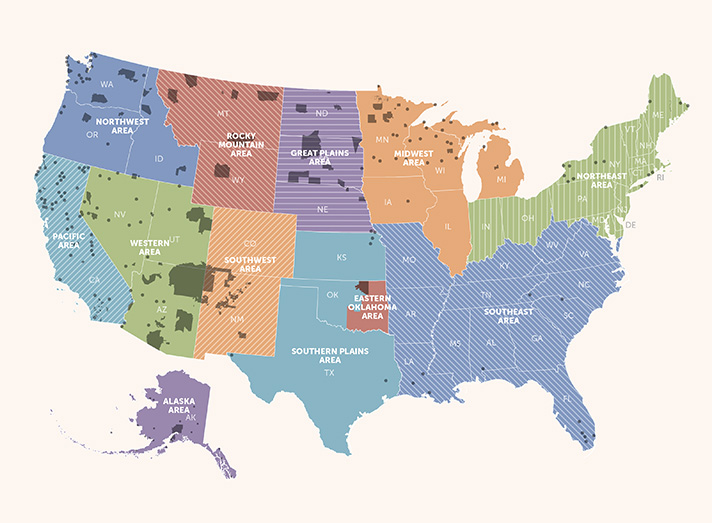Tribal Public Health Law
As of 2/2020, this webpage's database will no longer have an active search function. For questions, contact research@ncai.org.
Tribal Public Health Law can be a key tool in the work of tribal leaders to strengthen public health in their communities in a range of ways, including by serving to:
- Provide a mechanism to exercise authority (via the development of rules, regulations); policies, and procedures by codifying, implementing, and enforcing laws and policies
- Build infrastructure to sustain public health initiatives
- Establish a legal framework to prepare for emergencies
- Establish a coordinated effort to respond to public health concerns
- Prioritize public health issues not currently addressed
- Set a priority for engaging with public health data to improve health and save lives
This project aimed to assist tribal communities to develop meaningful public health codes and policies in two ways: 1) By providing information on existing public health laws in Indian country through the Tribal Public Health Law Database; and 2) By providing resources (e.g., memos detailing Area trends and Code Category trends and policy briefs) to inform the work of tribes to develop their own codes and policies and to enhance understanding of Tribal Public Health Law by the field.
-

Tribal Public Health Law Database
This database includes information on tribal public health codes and policies and is searchable by NCAI Area, Tribal Name, and Keyword. NCAI has received permission to share this information publicly from each tribe whose codes are included in the database.
-

Regional Tools
Tribal Public Health Law trends are often reflective of geography and tribal and state context. Information is provided on public health law trends noted by NCAI Area. Memos detailing these trends have been developed for each NCAI Area with two or more tribes providing consent to share their codes and policies.
-

Code Categories
Public health law is often organized into 10-15 different categories. We have identified 12 distinct Tribal Public Health Law categories in our review of tribal codes and policies. Information is provided on the characteristics of these categories.
Tribal Public Health Law Database
Regional Tools
The map below shows the 12 NCAI Areas with Area names listed below and aligned to color and shading. Memos are provided for the Northwest Area, the Great Plains Area, the Midwest Area, and the Southwest Area as these are the Areas with two or more tribes providing consent to share their codes and policies.
Northwest Area
Rocky Mountain Area
Area Information will be available once more than one tribal nation in the Area has given permission to share their codes publicly
Great Plains Area
Midwest Area
Northeast Area
Area Information will be available once more than one tribal nation in the Area has given permission to share their codes publicly
Pacific Area
Area Information will be available once more than one tribal nation in the Area has given permission to share their codes publicly
Western Area
Southwest Area
Area Information will be available once more than one tribal nation in the Area has given permission to share their codes publicly
Southern Plains Area
Area Information will be available once more than one tribal nation in the Area has given permission to share their codes publicly
Eastern Oklahoma Area
Area Information will be available once more than one tribal nation in the Area has given permission to share their codes publicly
Southeast Area
Area Information will be available once more than one tribal nation in the Area has given permission to share their codes publicly
Alaska Area
Area Information will be available once more than one tribal nation in the Area has given permission to share their codes publicly
Categories
-
Agriculture & Food Safety
-
Alcohol, Tobacco & Other Drugs
-
Animal Management & Control
-
Emergency Planning & Management
-
Environmental Health
-
Health Data
-
Health Services
-
Health Systems Governance
-
Infectious Disease Management
-
Injury & Violence Prevention
-
Public Health Infrastructure
-
Health & Cultural Resource Protections

